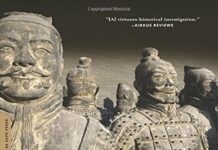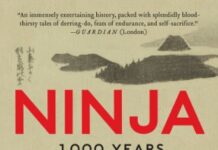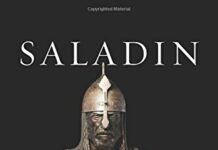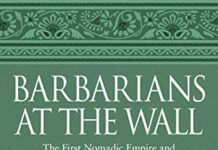
Ebook Info
- Published: 2009
- Number of pages: 336 pages
- Format: PDF
- File Size: 14.94 MB
- Authors: John Man
Description
A stunning biography of history’s most infamous warlord, Attila the Hun For a crucial twenty years in the early fifth century, Attila held the fate of the Roman Empire and the future of all Europe in his hands. He created the greatest of barbarian forces, and his empire briefly rivaled Rome’s. In numerous raids and three major campaigns against the Roman Empire, he earned himself an instant and undying reputation for savagery. But there was more to him than mere barbarism. Attila was capricious, arrogant, brutal, and brilliant enough to win the loyalty of millions. In the end, his ambitions ran away with him. He did not live long enough to found a lasting empire―but long enough to jolt Rome toward its final fall.In this riveting biography, masterful storyteller John Man draws on his extensive travels through Attila’s heartland and his experience with the nomadic traditions of Central Asia to reveal the man behind the myth.
User’s Reviews
Editorial Reviews: Review “Entertaining and lucid account of a phenomenal militarist unable to resist a crumbling empire’s vast, unprotected wealth.” ―Kirkus Reviews“Full of military adventures and political maneuverings, Man’s lively narrative provides a glimpse of a leader whose name has become synonymous with ruthlessness.” ―Publishers Weekly“Man’s book is a highly readable account of a bellicose steppe people and their leader who, long after they departed from the West, continue to haunt the European imagination.” ―Library Journal“One could not wish for a better storyteller or analyst than John Man. . . . His Attila is superb, as compellingly readable as it is impressive in its scholarship.” ―Simon Sebag Montefiore, author of Stalin About the Author John Man is a historian and travel writer with a special interest in Mongolia. His Gobi: Tracking the Desert was the first book on the subject in English since the 1920s. He is also the author of Atlas of the Year 1000, Alpha Beta, on the roots of the Roman alphabet, and The Gutenberg Revolution, on the origins and impact of printing. His most recent books include The Terracotta Army, Genghis Khan: Life, Death, and Resurrection and Attila: The Barbarian King Who Challenged Rome.
Reviews from Amazon users which were colected at the time this book was published on the website:
⭐What was said in the begining of the book pretty much sums it up “little is known about attila”. The author mentions Attila and his campaigns in about 1/3 THATS RIGHT 1/3 of the book. The rest is the author saying things like “the huns were said to have misshapen heads” so for about 10 pages he writes the genetics of the huns and their skulls.Some things are relevant but still off topic. Practically 20-30 pages is all about a modern day professional mounted archer in and his methods were made by copying the huns, he gets into his sport of mounted archery possibly being considered for the Olympics and how people flock from all over the world to take lessons from this guy. I can understand a few pages on this guys technique, but i want a biography on Attila, not some modern day copycat.The author is very in into Archaeology and up to date theories on huns BUT for a long time he is talking about the possible remains of the Visigoth leader (Romes ally against huns) and how some evidence points this way, others that. But when it comes down to it if Theodoric (Visigoth leader) should be mentioned in this book, it should be the role he played towards Attila, not the authenticity of his bodily remains. Though the battle sight being unknown is what makes people think the battle is where Theodoric’s supposed remains are.THE WORST PART- All this useless information is spread randomly throughout the book, there is no single section of just Attila’s historical facts. You have to read through all the crap to get all the info.The only thing close that came close to the topic being off topic was a great deal of pages saying the huns origin, a low class people kicked out of an area of modern day china that became nomads. Every thing i just said in this paragraph took up a ton of pages that could just as easily be said as i said it.Why did I even give it 2 stars??? Because like the book says and any scholar says “little is known about Attila, by the end of the book you know all the info about Attila thats available. I just wish i didnt have to weed out all the BS in the book to get to the facts.
⭐I looked for a book/novel which presented more about the everyday life of Huns than I had found available in other books. I have read stodgy histories of the Huns written by University Professors. For the most part they give a chronology of who did what and when without making much speculation about why they did it. I found no history about the every day life of the Huns. This is probably because there is little primary or secondary information about what Huns looked like, how they lived, how they fought.The book by John Man does repeat primary information (i.e., Priscus) about the Huns. But he takes that information and formulates reasonable speculations that give a much better idea of what the Huns were like. He always gives the rationale for the assumptions and speculations he makes. And, in the end, I think I he provides a much better understanding of the life of the Huns, and in particular Attila, than one gets from any of the academic histories.Let me give an example. The author visits and interviews people who have tried to live the life of a steppe bowman. Men who have learned to make a Scythian bow, learned to use a Scythian bow on foot and on horseback. So the author gives a credible idea how Huns made their bows and used them on horseback. I’d never be able to take that away from reading an academic history.Part history, part biography, part novel and part travelogue, this book should interest anyone curious about the late Roman Empire and the foundation of modern European states. If you are interested in reading a book about the Huns, this book should be high on your reading list.
⭐Being an amateur student of ancient Roman history, I picked this book up as an impulse purchase on the way to vacation. Having just finished it, I thoroughly enjoyed it. I particularly enjoyed Mr. Man’s sprinkling of etymologies throughout the book and, similarly, his deconstruction of hundreds of years of legend and folklore that have sifted on top of the facts concerning Attila and the Huns. Mr. Man resists the easy temptation to describe the Huns as many other historians have: ugly, brutish, and mindless killers. Instead, he takes the time to try to understand who Attila was and what motivated him, sometimes by traveling to very remote locations to give us the feeling of the place. There is a great description of the artistry and skill required by mounted archers. I got the sense of the overwhelming force exerted by Attila’s cavalries. I had a fun time imagining myself as a Roman soldier looking across a dusty plain at the whirlwind of Hun archers that are seconds from slaughtering me and everyone around me. Being a fan of Gibbon, I appreciate how Mr. Man gently corrected some of Gibbon’s errors. This book greatly enhances my understanding of the conditions and events of Central Asia and Europe in the decades preceding the final fall of the Western Roman Empire. Many authors describe the slow collapse of a corrupt and decayed empire, but I really get a sense of that from this book. So, in brief, I would say this book brought me into the moment and caused a visceral response.
⭐Good, interesting, easy read with lots of information. I used this in a Master’s degree research paper, and it helped point me to a few primary sources to further my research.
⭐There is more discussion of current day Hungarian archery in this book than there is about the subject suggested by the title. The book establishes pretty early in that there is 0 source material for the man himself and that whatever language spoken by the Huns disappeared with them. This author discussed everything except for his subject. Better off doing internet research than spending money on this.
⭐Very good
⭐covered the subject in a compelling manner
⭐Poorly written. Man sounds more like a tour guide than a historian. This is one of the few books I have purchased that will not remain in my library.
⭐This is a superb book. It has all the fact and dates but more they are put in an extremely readable and human context. You get not only an indepth historical background, but portraits of the people involved and what was motivating them on a personal level.
Keywords
Free Download Attila: The Barbarian King Who Challenged Rome in PDF format
Attila: The Barbarian King Who Challenged Rome PDF Free Download
Download Attila: The Barbarian King Who Challenged Rome 2009 PDF Free
Attila: The Barbarian King Who Challenged Rome 2009 PDF Free Download
Download Attila: The Barbarian King Who Challenged Rome PDF
Free Download Ebook Attila: The Barbarian King Who Challenged Rome





